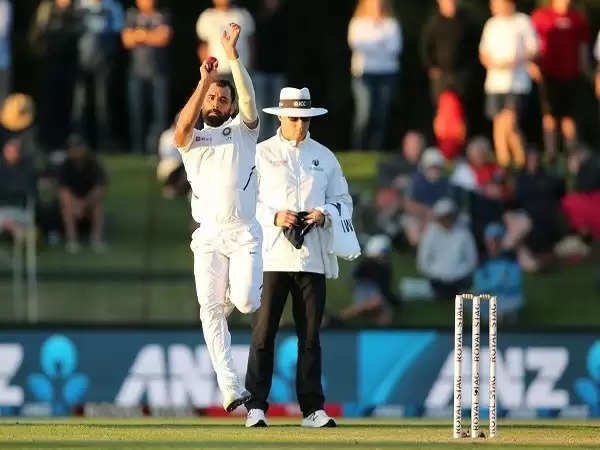The over rate debate: Farcical law or a necessary evil?

India being docked a World Test Championship (WTC) point out of their hard-earned Boxing Day Test win in Centurion has retriggered the longstanding debate on over rate regulations in Test cricket.
The ICC found India in breach of one of its important playing conditions within the WTC and imposed a one-run penalty on the Virat Kohli led side for being an over short “of the target after time allowances were taken into consideration.”
The Indian players were also fined 20 per cent of their match fees, “in accordance with Article 2.2 of the ICC Code of Conduct for Players and Player Support Personnel”. The rule makes players liable for a fine of 20 per cent of match fees for every over they failed to deliver on the field.

Ever since the WTC has come into being, the ICC has adopted a stricter mode of operation with regards to the over rate regulations. This reflected clearly by the amended playing conditions for the WTC: for every over that a team is found short of target after time allowances, they are docked one point from their WTC tally.
This, in a dynamic, nine-team competition where teams can’t always be sure of holding their own aces and could depend on other teams’ results, is a tricky rule to abide by without having to compromise their balance and make, at times, unpreferred tweaks to their playing XI.
On a surface with a thickish layer of grass in Centurion – a ground where spinners average in excess of 50 in Test cricket – India decided to play four pacers. In a rain-marred fixture, with the deterioration being delayed by the moisture, Ravichandran Ashwin delivered a total of 22 overs in the Test where India bowled over 130 overs.
With lots of pace overs bowled, the Indian side were found one over late in finishing with the adequate number of overs after time allowances. But beyond the over rate rule, there is a debate of legitimacy and fairness. Given the track, India were always inclined to play four pacers.
Also Read: Siraj Escapes Without Fine: Inconsistency By Match Officials Gets Flak

Were India reprimanded for reading the conditions right in Centurion and not overthinking the over rate regulation?
Why exactly is ICC strict with the over rate rule?
So is the WTC over rate playing condition discouraging teams from playing the ideal side and avoid bowling in negative match-ups, least likely to bear them desired results and forcing them to operate with spinners, which – even budget for Ashwin’s greatness – may not be what the Indian team wanted to do at the time?
Less than a week before the Boxing Day Test in Centurion, England were at the receiving end of the strictly imposed over rate regulation after playing four specialist seamers in the Adelaide D/N Test. While England picked what they felt was the right attack for the conditions within the game, the ICC found them five overs short of the target and imposed a five-point penalty on them in WTC, a significant dent to their chances of making the final.
The over rate rule has only gone stricter from one cycle of the WTC spanning 2019-21 to 2021-23. In the current cycle, where teams are vying for an equal number of points per Test irrespective of the series size, a penalty of even a single point can prove substantial. Unlike the previous cycle where teams earned 24, 30, 40 and even 60 points for their Test wins depending on the series length, the penalty as harsh as five runs wouldn’t hurt a side too much. They could always make up, recover and rejuvenate their campaign, especially in home conditions.
A discussion thread between a cricket lover and famous cricket statistician Mazhar Arshad on Saturday (January 1), gave us a peek into both sides of the argument.
While the fan argued that the ICC should not impose over rate penalties if the umpires don’t find teams deliberately employing time-wasting tactics, the Pakistan-based Arshad gave a rationale that the governing body keeps in mind broadcasters and television slots for matches.
Not really. If a TV channel has dedicated 3 hrs slot to a cricket match then it should finish in 3 hrs. That’s why England are strict with over-rates especially in T20s. Slow over-rates also adds to dull viewing. If there is no check and balance, teams won’t even bowl 75 ovs/day.
— Mazher Arshad (@MazherArshad) January 1, 2022
The fan also argued that the over rate penalties should only come into being for draws in Test cricket. If there is an outright result, the rate at which teams bowled their overs should not matter. But, again, Arshad threw perspective into the mix that the ICC doesn’t take its call depending on the result. The result is unknown.
What the ICC is trying to eradicate is an option for a team to deliberate bowl their overs late so that they can’t deny the other team a fair chance of coming out winners.
You never know the end result. Time wasted by bowling team on day-two could deprive the other team a win on day-five. That’s why you have to draw a line and ask the teams to bowl certain overs in a specific time.
— Mazher Arshad (@MazherArshad) January 1, 2022
Whatever it is, one thing is for certain – the over rate regulation and the debates that exist about its implementation will not be over anytime soon. The ICC will continue to impose over rate penalties and fines on teams, who err after time allowances, while the fans will continue finding the rule contentious whenever their team has to bear the brunt. Thus, teams currently have no choice but to accept and abide by the rule and the playing condition for the sake of their WTC campaign.

